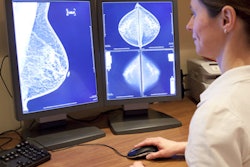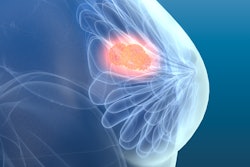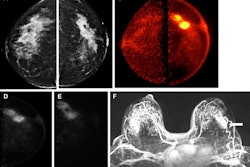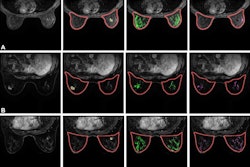Annual mammography with a clinical exam -- rather than semiannual -- is “likely sufficient” for women who have undergone breast-conserving surgery and were treated with neoadjuvant therapy, a study published March 2 in Surgical Oncology Insight has found.
Researchers led by Ton Wang, MD, from Cedars-Sinai Medical Center in Los Angeles found insufficient evidence supporting the use of semiannual mammography in these women, with less than 2% of women developing locoregional recurrence on routine surveillance.
“Semiannual mammography is associated with unnecessary benign biopsies, which may increase health care costs and patient distress,” Wang and co-authors added.
While women who have had breast-conserving surgery for invasive breast cancer are recommended for annual mammography, surveillance guidelines for women treated with surgery following neoadjuvant therapy have not been established.
The researchers noted conflicting data on the risk of locoregional recurrence following breast-conserving surgery in women treated with neoadjuvant therapy. This raises questions on whether more frequent mammographic surveillance is effective.
A 2018 survey of radiologists in American College of Radiology (ACR)-accredited mammography facilities found that 73% of facilities performed diagnostic mammographic evaluation every six months for a variable time prior to returning to routine screening mammography. Wang and colleagues also pointed out that more intensive surveillance may lead to more false-positive findings and increased healthcare costs.
Wang and colleagues analyzed whether semiannual mammography in these women is effective. It collected data from 139 women who received breast-conserving surgery following neoadjuvant therapy between 2007 and 2020 for treating invasive breast cancer. The team analyzed clinicopathologic features, surveillance imaging, and outcomes, and estimated direct costs associated with surveillance based on Medicare Physician Fees.
Of the total women, 59 had a complete pathologic response and most patients received semiannual mammography for 24 months postoperatively. This included 84.2% at six months, 82% at 12 months, 80% at 18 months, and 78% at 24 months, respectively.
The researchers reported that biopsies were performed due to abnormal imaging findings in nine women at six months follow-up, seven at 12 months, two at 18 months, and eight at 24 months, respectively. Overall, 77.8% of biopsies performed were benign.
Also, at a median follow-up of 65 months, including a range of 37 to 86 months, 22 women (15.8%) developed recurrences. Of these cases, 14 were distant and eight were locoregional. Meanwhile, just two women (1.4%) had a recurrence detected by mammographic surveillance. The team highlighted that this points mammographic detection of locoregional recurrence being rare in the first 24 months after breast-conserving surgery.
Finally, the researchers reported that semiannual imaging would lead to an average of $373.68 per patient in direct costs tied to surveillance.
The study authors highlighted that their results point to these women being unlikely to benefit from more frequent mammographic surveillance. They added that shifting these women from semi-annual to annual mammography may cut down on unnecessary biopsies and follow-up imaging from false-positive cases.
“As more patients receive neoadjuvant therapy and pathologic complete response rates continue to improve, it will be vitally important to determine an evidence-based surveillance strategy to detect locoregional recurrences in a timely manner in patients who receive breast-conserving surgery,” they concluded.
The full study can be found here.



















